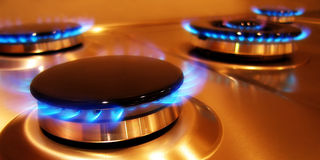Cleaner air, healthier lives: Africa's need for clean stoves

Countries worldwide are making strides in adopting clean cooking technologies
What you need to know:
- Electric stoves and induction cooktops are the most environmentally friendly options, as they produce no direct emissions.
- LPG is a cleaner alternative to biomass and can be used in various cooking appliances, including stoves and cookers.
Clean cooking refers to using fuels and technologies that emit less smoke, carbon monoxide, and particulate matter. This shift from traditional cooking methods is essential for improving public health, reducing environmental degradation, and contributing to sustainable development.
Traditional cooking methods often rely on polluting fuels like wood, charcoal, or kerosene, leading to significant indoor air pollution. This exposure is a major cause of respiratory diseases, particularly among women and children who spend long hours cooking indoors.
According to the World Health Organization (WHO), indoor air pollution from cooking is responsible for over 4 million deaths annually, mostly in developing countries. Globally, the cleanest cooking methods include electricity, liquefied petroleum gas (LPG), and biogas.
Electric stoves and induction cooktops are the most environmentally friendly options, as they produce no direct emissions. LPG is a cleaner alternative to biomass and can be used in various cooking appliances, including stoves and cookers. Biogas, produced from organic waste, is a renewable and clean energy source that can be used for cooking.
SDG 7 demands we ‘ensure access to affordable, reliable, sustainable, and modern energy for all.’ Clean cooking is a crucial component of achieving this goal. We can achieve this by using cleaner fuels and technologies while ensuring everyone has access to the affordable, reliable, and modern energy needed for a better quality of life.
Continued reliance on traditional cooking methods will perpetuate environmental degradation, public health crises, and social inequalities. Deforestation will continue leading to loss of biodiversity and increased impact of climate change.
According to the Global Alliance for Clean Cookstoves (GACC), more than three billion people worldwide still rely on polluting cooking fuels and technologies. This has severe health consequences, especially for those who spend long hours cooking indoors.
Indoor air pollution is a major contributor to respiratory diseases, such as pneumonia and chronic obstructive pulmonary disease (COPD). Exposure to harmful pollutants from traditional cooking methods can also increase the risk of heart disease, cancer, and other chronic illnesses.
Countries worldwide are making strides in adopting clean cooking technologies, but progress varies significantly across regions. Developed nations tend to have higher adoption rates, while many developing countries face substantial challenges.
In India, the government has launched several initiatives to promote the use of LPG, resulting in a significant increase in clean cooking adoption. Similarly, government subsidies and regulations have been crucial in promoting electric cookstoves in China.
In Kenya, the Clean Cooking Association of Kenya (CCAK) has been instrumental in advocating for and supporting the adoption of clean cooking technologies. Through collaboration with the government, the CCAK has developed policies and regulations promoting clean cookstoves and fuels.
Additionally, it is working with private sector companies to develop and distribute affordable clean cooking solutions. These efforts have contributed to a gradual increase in clean cooking adoption in Kenya, although significant challenges remain.
Despite progress made in recent years, Africa continues to lag in adopting clean cooking technologies. Several factors contribute to this including high costs, limited access to electricity, and cultural preferences are among the primary challenges.
Several measures must be taken to address these challenges and accelerate the transition to clean cooking, especially in Africa. Governments can provide subsidies and incentives to encourage the adoption of clean cooking technologies. Investing in renewable energy and improving electricity infrastructure can make electric cooking more accessible.
Engaging with communities and promoting the benefits of clean cooking can help overcome cultural barriers. Finally, continued research and development are needed to develop affordable and effective clean cooking technologies.


